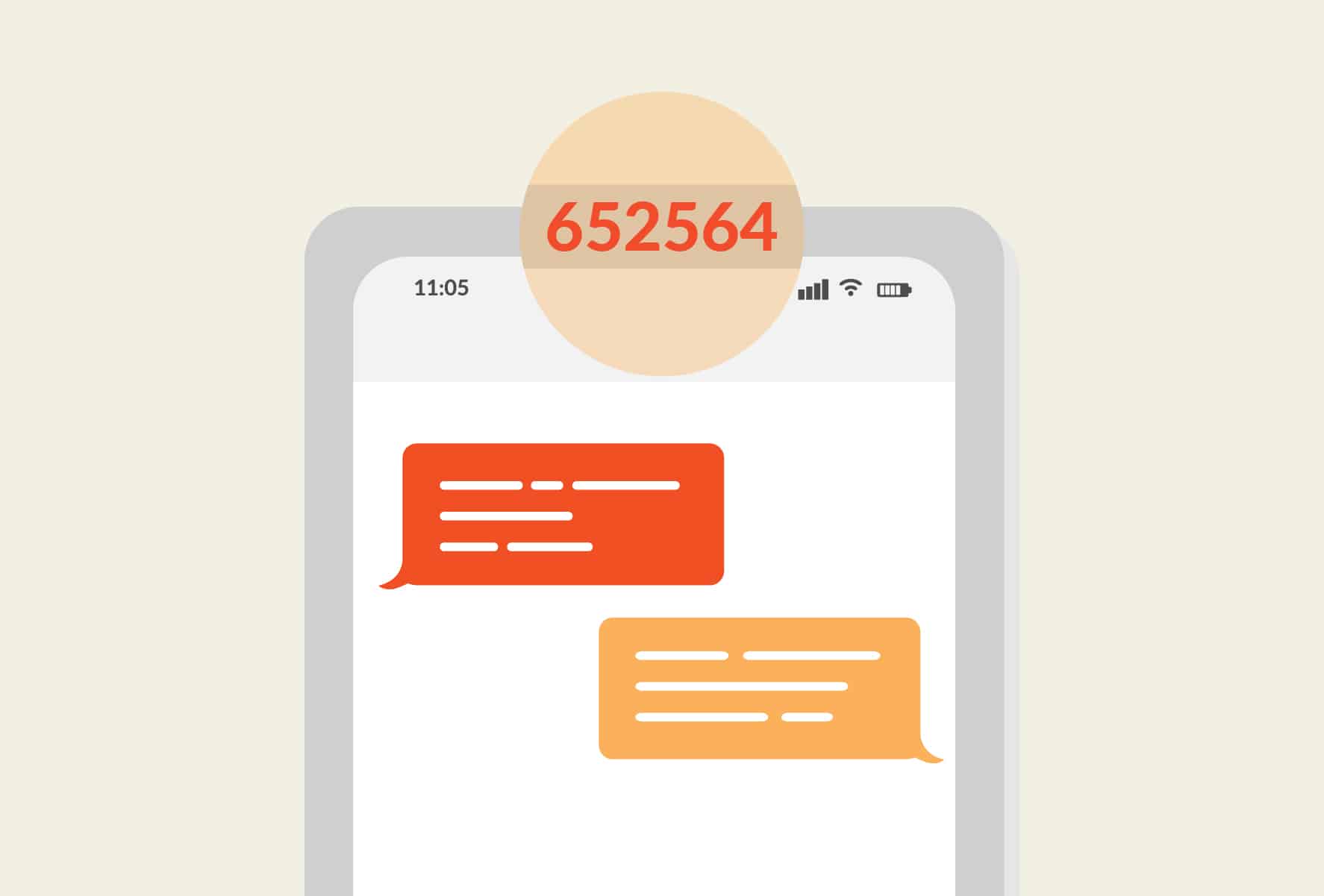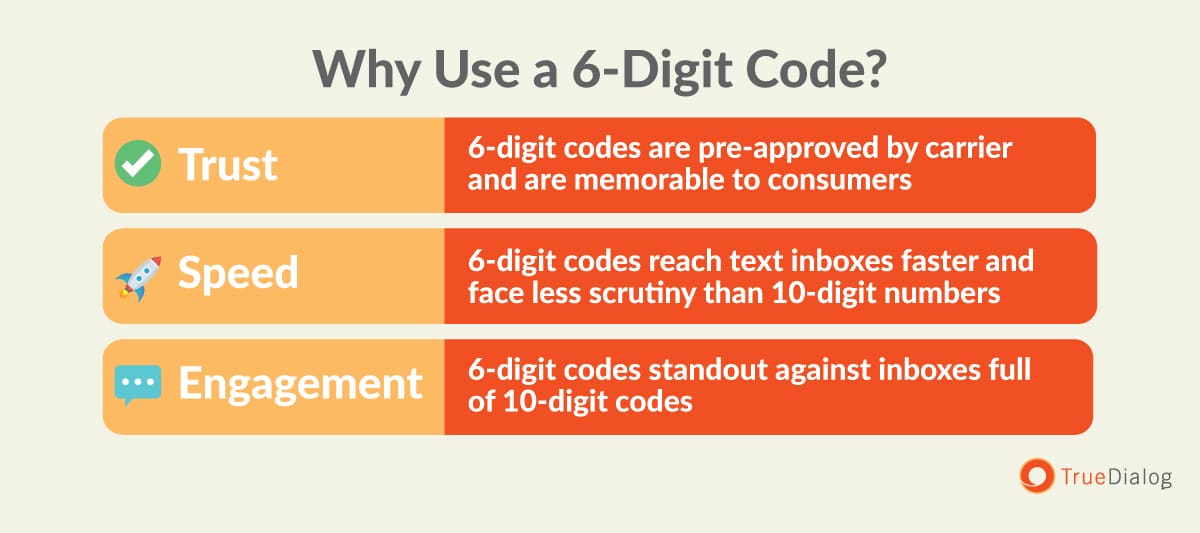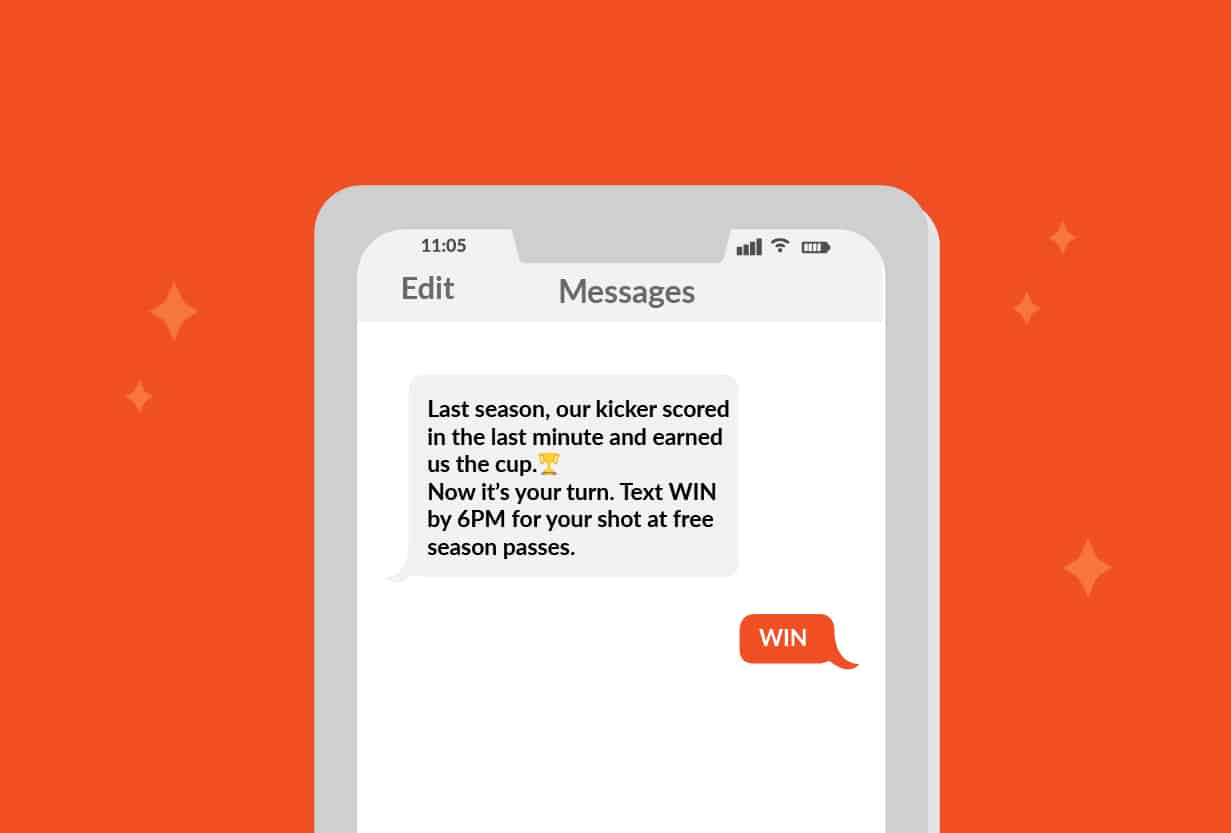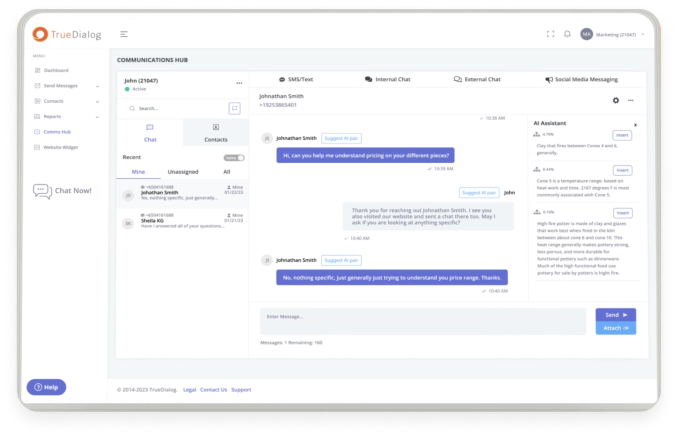Beyond your brilliant marketing skills, your SMS campaigns’ success hinges on three factors: speed (i.e., throughput), scale (i.e., bulk), and reliability (i.e., deliverability). In other words, your messages need to reach recipients quickly, easily land in hundreds or thousands of inboxes, and consistently clear carriers’ filtering processes.
(And after all the effort you put into planning campaigns and crafting compelling copy, it’s really important that your texts make it to their intended targets.)
Of course, much of this comes down to choosing the right mass texting service, but there’s another factor within your control: your phone number. To reliably reach your contacts, you may want to get a 6-digit code.
But what, exactly, does a 6-digit code do? What makes this so beneficial? And how (and when) should you use one?
Here’s everything you need to know:
What Is a 6-Digit Code and How Does it Work?
A 6-digit code (also called a short code) is a number developed by wireless carriers specifically for promotional communications, alerts, notifications, confirmations, and text-to-join campaigns. They’re leased by the Cellular Telecommunications Industry Association (CTIA), a group that manages and regulates short codes via the Short Code Registry database and helps ensure organizations use these numbers ethically and responsibly.
But why would an organization bother registering for a short code when they already have a traditional phone number?
Unlike standard 10-digit numbers, these codes are pre-approved by carriers to support high-volume bulk messaging with better throughput and deliverability. When you send texts using a short code, your messages pass through special SMS gateways designed for speed and compliance, guaranteeing much faster deliverability. Because they’re thoroughly vetted, carriers trust these codes more than traditional numbers, making them less likely to be flagged or blocked. Trus
That said, unlike standard local or toll-free numbers, short codes lack the functionality to make or receive voice calls. These codes (which include 6-digit and 5-digit texting numbers) also aren’t as easy to obtain as traditional numbers — and for good reasons.
By requiring that businesses complete a formal application process to receive their short codes (and follow strict guidelines when using them), carriers can keep the numbers from falling into the wrong hands and being used for spamming, scamming, or other deceptive practices.
Common Uses of 6-Digit Codes
6-digit codes are versatile, convenient, and trustworthy, which makes them a perfect number to use when sending important messages and high-impact campaigns. (They’re also easy to obtain if you’re a TrueDialog user.)
Here are two common use cases for short codes:
Login Verification and Security
With cybercrime on the rise, many organizations have implemented two-factor authentication (2FA) as an extra layer of protection — especially in highly regulated and frequently targeted industries like financial services. This security measure requires users to provide a second form of verification to access their accounts, making it much harder for unauthorized people to access sensitive user data.
When using 2FA, users are often prompted to enter their username and password first, then asked to input a special code or one-time password sent to their mobile devices. Because short codes are already approved by carriers and support faster delivery, they’re an excellent tool for sending time-sensitive information, like one-time passwords and login codes. Speedy delivery also creates a better user experience, allowing users to log in to their accounts within seconds instead of waiting several minutes.
SMS Short Codes and Marketing
As we mentioned earlier, speed is essential to SMS success. Whether you schedule a text message or send it directly, you want to ensure it arrives at the most convenient time for your recipient (and when they’re most likely to engage with the content you’ve shared).
For example, if you’re running a limited-time offer or a flash sale, you’ll want to make sure your contacts have an opportunity to participate. If your message takes too long to land in their inboxes, they might miss their chance — which can create friction and sow mistrust in your brand.
Suppose you’re sending an SMS campaign on behalf of an entertainment venue announcing a special pre-sale offer to a highly anticipated event. If you use a traditional phone number, you risk delays or even being inadvertently blocklisted by certain carriers. As a result, some contacts might miss the pre-sale, which could threaten their confidence in your brand (and create a major headache for your customer service team). However, using a 6-digit number will help ensure your messages reach recipients quickly and streamline the purchase experience.
Text-to-join campaigns are another popular use for short codes. For example, an organization might ask prospective contacts to text a keyword (like “JOIN”) to a short code number as a quick and easy way of opting into future text messages. So long as you remain compliant with the Telephone Consumer Protection Act (TCPA) requirements, such as making it easy to opt out at any time, this can be an effective tool for growing your subscriber lists and boosting brand visibility.
Of course, it’s also crucial that you choose an SMS platform that prioritizes compliance and helps you keep your contact lists up to date. For example, TrueDialog makes it easy to adhere to regulations with our single and double-opt-in consent feature. Not only do customers have flexibility when opting in, but we also ensure your contacts can unsubscribe instantly by replying with industry-specific keywords.
Why Businesses Rely on 6-Digit Codes
There are three major reasons your organization may choose to use a six-digit code:
-
Trust
As mentioned earlier, because carriers pre-approve short codes and the CTIA goes to great lengths to ensure they’re used appropriately, messages from these numbers pass carrier checks faster and more easily. However, because these numbers are short and easy to remember, your contacts will begin to recognize them. Even before they read the message, they’ll know it’s coming from a trustworthy source and a communication they’ve opted into.
-
Speed
Short-code gateways are designed for speedy bulk sends. Plus, given the thorough registration process and carrier approval, short codes don’t face the same scrutiny as messages from traditional 10-digit numbers, so they reach text inboxes much faster. They guarantee faster throughput, allowing you to send a million messages instantly (rather than sending them as batches or dripping them over several minutes or hours). That’s why they’re ideal for campaigns where time is of the essence — like flash sales, security notifications, reminders, or event invites.
-
Engagement
A 6-digit text number will easily stand out from an inbox full of messages from 10-digit numbers and help drive engagement — especially for brands using vanity short codes (numbers chosen for a specific memorable sequence, like 123123, instead of random numbers like 284196).
That, combined with the fact that messages are delivered faster and are easy to act on (by using simple keywords to respond), helps boost recipient engagement.
How to Get a 6-Digit Code for Your Business
If you’re interested in setting up a short code for your organization, here are a few things you’ll need to know:
-
Shared vs Dedicated Short Codes
Previously, brands had two options to choose from: dedicated codes (which are owned and used exclusively by one organization) and shared codes (which could be used by multiple organizations simultaneously).
As you might expect, shared codes could get confusing for users who subscribed to messages from more than one of the brands sharing a single number. Additionally, if one of the parties engaged in malicious activity (or was hacked by someone who did), it could muddy the reputation of all brands sharing the code. For these reasons, the industry no longer uses shared short codes. -
Registering a 6-Digit Text Number
The process for obtaining a short code is slightly more complex than buying a traditional phone number, but as you can see, the benefits are well worth the extra effort. You can lease a short code directly through the CTIA, which requires submitting a detailed application explaining how you’ll use the code and how you’ll stay in compliance.
You’ll also need to decide whether you want to lease a random short code or a vanity short code, which can spell out a word or include an easy-to-remember sequence of numbers. (One 6-digit number example of a vanity code is Domino’s short code, 366466, which spells out “DOMINO” on a phone keypad.)
Of course, the easiest method for getting a short code is to work with an enterprise-level SMS messaging platform like TrueDialog that will walk you through the registration process and ensure you remain compliant with regulations. -
Choosing the Right SMS Platform
While comparing SMS solutions for customer service, marketing, or sales, it’s important to consider whether or not the platform will assist you in setting up your short code, as well as the company’s relationship with top mobile carriers. For example, TrueDialog is one of the only SMS platforms with direct connections to carriers, helping enhance your message deliverability and reducing the costs you might incur working with third-party aggregators.
While you aren’t required to use a 6-digit code for your SMS marketing, purchasing one of these numbers can make things much easier to manage and improve campaign outcomes. By supporting speed, scale, and reliability, short codes ensure your carefully crafted messages reach your contacts, fostering brand confidence and consistent engagement.







